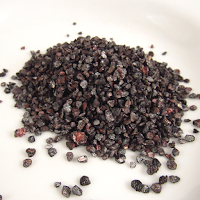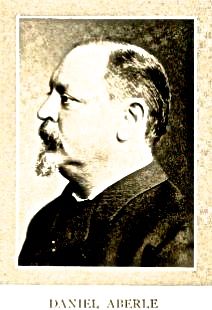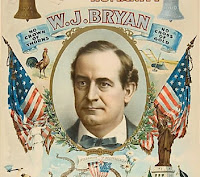
If you believed Fels’ advertising, his was among the oldest, largest, most established wholesale and mail order liquor houses in America. One Fels advertising piece claimed: “For nearly 50 years (ever since 1869) we have catered to the wants of the discriminating buyer, both dealer and consumer, being not only the oldest house in our line, but the largest west of New York City — in fact, one of the largest in America.…We own and control three distilleries, two in Kentucky and one in Missouri.” The piece went on to claim a customer base of 5,000 wholesalers and dealers, and 350,000 individual mail order customers.
Ads like this were published widely. Printers Ink, the journal of the advertising trade early in 1910 reported: “The Fels Distilling Company, Kansas City, will shortly begin an extensive mail order whiskey campaign in a big list of daily newspapers, weeklies, and mail-order publications in the Middle West and South. One hundred and fifty line display copy will be used.” Ad managers in the target areas must have been salivating at the thought of landing a Fels account.
Tall tales and outright chicanery were endemic in the pre-Prohibition liquor trade. Arthur Fels, however, was carrying deception to new heights — or low point. He was almost without peer in creating a monumental myth about Fels Distilling Company. The truth lay somewhere else. Finding it sends us back across the Atlantic to Kaiserslautern, Bayern, Germany.
There in 1876, Arthur was born, the son of Bertha Hirsch and Joseph Fels. When the boy was only three years old, his father died. Bertha, apparently seeing no prospects for herself and her only son in Germany, left their homeland and came to the United States. She had relatives here, likely first cousins, Adolph and Simon Hirsch, who had settled in Leadville, a Colorado mining town, and were running a saloon and wholesale liquor business. [See my post on Simon Hirsch, Dec. 10, 2011.] The Hirsch brothers would loom large in Fels' life.As he grew to maturity, Fels went to work for his cousins.
Leadville was a classic boom and bust mining town. Gold was discovered nearby during the Pikes Peak gold rush of 1859, followed by discovery of rich silver ore in the early 1870s. In July 1893 the price of silver crashed from $1.60 per troy ounce to less than sixty cents. Mines went bankrupt and Leadville fell into an economic depression. Its 1893 population of over 40,000 dwindled to less than 15,000 by 1895. The Hirsch brothers’ liquor trade virtually disappeared.
Simon was the first brother to decamp from Leadville, arriving in Kansas City about 1885. He bought into a liquor dealership that had been established in 1879. Under Simon’s leadership the company flourished. Trade reached outside Kansas City to other parts of Missouri and into nearby Kansas and Colorado. At some point Fels joined him and, it appears, initially became one of four Hirsch traveling salesmen. According to business directories, within several years Fels had been moved into the front office as cashier.
With Fels showing a distinct talent for the whiskey business, about 1912 a scheme was hatched, likely fostered by Fels himself, to create a new company that would operate side-by-side with the successful Hirsch liquor house. The new entity would concentrate on the mail order whiskey trade that for the moment was thriving because federal laws allowed shipments of alcohol into “dry” locales and states. As the “Heart of America” Kansas City was well positioned. Likely funded by Hirsch money, the Fels Distilling Company was born.



In fact, Fels was distilling none of his own whiskey but with the help of the Hirsch brothers blending his distillery products in a back room of their liquor house. The idea that Fels owned and controlled three distilleries also was a fantasy. For a brief period (1889-1892) Simon Hirsch was recorded as a co-owner of a distillery in Daviess County, Kentucky (RD#18, 2nd District). This was well before the Fels operation began.
The myth about his company that Fels attempted to project seeming failed miserably. Perhaps his “rectified” whiskey was substandard. Certainly the expense of the aggressive ad campaign must have been drain on the coffers of the Hirsch company. Then too, Prohibition lurked in the foreseeable future. After at most seven years in business, someone pulled the plug on The Fels Distilling Company. It ceased operations. The culprit likely was Simon Hirsch.
Despite the demise of his liquor enterprise, however, Arthur Fels flourished. He became an investment banker and realtor. As president of the Arthur Fels Company, he was credited with being instrumental in the financing of early high-rise buildings in Kansas City and St. Louis. He also had a political career, elected to the city council in 1924 and 1925. During World War II he was selected as a member of the Selective Service Board. Married and with one son, Fels died at 97 years old and was cremated.
As noted earlier, tall tales were an accepted part of the environment in the pre-Prohibition liquor trade, a flaw that likely helped bring on National Prohibition. Although Fels’ fabrications were among the most egregious, his failure may indicate that the drinking public was more knowledgable than he gave them credit for. Or maybe it was just that he was peddling lousy whiskey.
Note: This post was researched from a number of online and other sources.







































